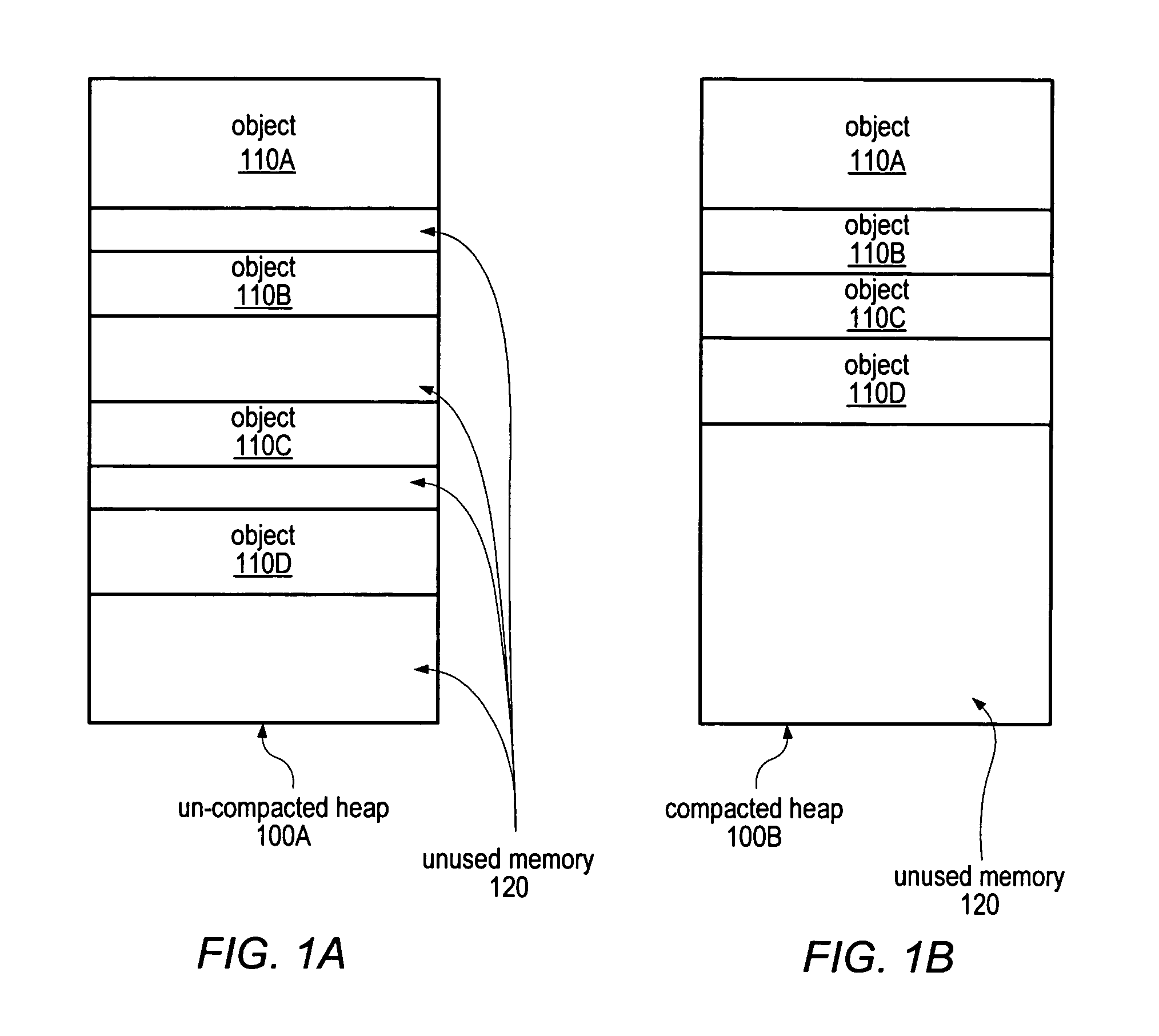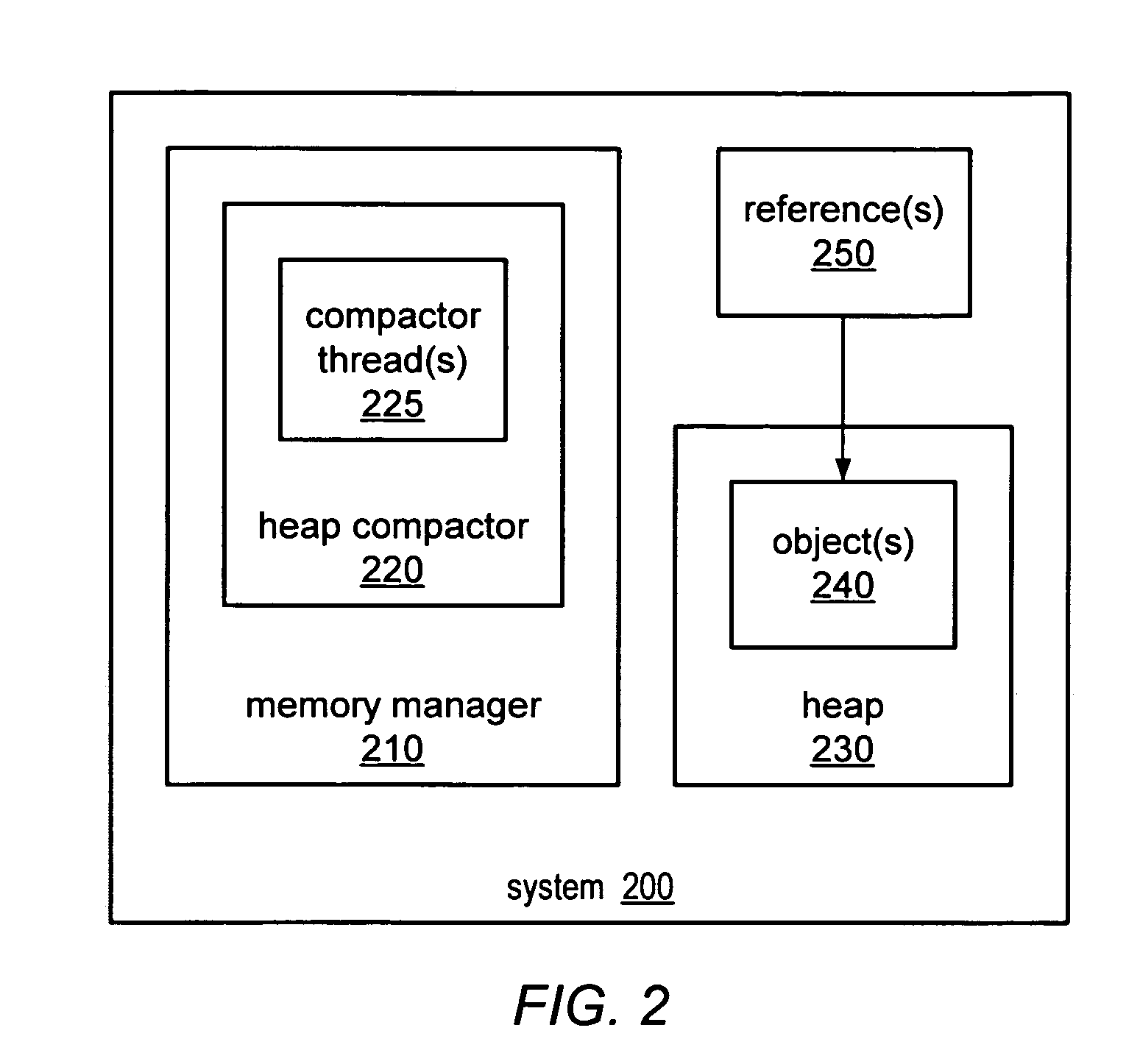Reference-updating using per-chunk referenced-address ranges in a compacting garbage collector
a garbage collector and referenced address technology, applied in the field of memory management, can solve the problems of increasing the memory requirements of the system, difficult to share the available memory space among multiple applications, and consuming a lot of resources
- Summary
- Abstract
- Description
- Claims
- Application Information
AI Technical Summary
Benefits of technology
Problems solved by technology
Method used
Image
Examples
Embodiment Construction
[0029]Sliding compaction, as described herein, may involve calculating and maintaining range-edge referenced addresses, such as a highest referenced address (HRA), for respective logical chunks of a heap being compacted. FIGS. 1A and 1B illustrate a heap before (FIG. 1A) and after (FIG. 1B) compaction. For example, a heap compactor may compact un-compacted heap 100A including memory objects 110A, 110B, 110C, and 110D, as illustrated in FIG. 1A. Un-compacted heap 110A may also include one or more sections of unused memory 110. As noted above, a heap may become fragmented because of de-allocating or freeing memory objects no longer needed by applications or other processes of the system.
[0030]Compaction techniques generally include four separate operations. During the first operation, generally called the marking phase, a heap compactor may logically partition or divide un-compacted heap 100A into multiple segments or chunks of fixed, or equal, size and may determine and record per-se...
PUM
 Login to View More
Login to View More Abstract
Description
Claims
Application Information
 Login to View More
Login to View More - R&D
- Intellectual Property
- Life Sciences
- Materials
- Tech Scout
- Unparalleled Data Quality
- Higher Quality Content
- 60% Fewer Hallucinations
Browse by: Latest US Patents, China's latest patents, Technical Efficacy Thesaurus, Application Domain, Technology Topic, Popular Technical Reports.
© 2025 PatSnap. All rights reserved.Legal|Privacy policy|Modern Slavery Act Transparency Statement|Sitemap|About US| Contact US: help@patsnap.com



